 |
 |
 |
 |
X
Untitled 3
|
Featured Item:
ELECTRICITY AND WELL INCLUDED ON THIS LOT!! |
Large 204.4 Acre Ranch, near Dryden, Terrell County, TX. |
View Larger Map
|
Meyers Canyon Ranch: Tract 19
Surround yourself with the land of spectacular sunsets, and the largest
landscapes in the state of Texas. All are the perfect setting for the
unspoiled landscape of Meyers Canyon Ranch. With every breath of fresh,
clean air, you'll know this pristine unspoiled property is for you -
especially since it has been thoughtfully master-planned to exist in
harmony with nature and the wildlife of West Texas.
Financing:
This lot is being offered for sale with financing. Simply make the small
down payment, and the land contracts and coupon books will be emailed
and hard copy mailed to you immediately. You can start using or building
your land while you are making payments.
Checkout:
The checkout above bills the down payment of $121 only.
SALES PRICE: $102,015
DOWN PAYMENT: $121
MONTHLY PAYMENT: $1000
INTEREST: 9%
10%
DISCOUNT ON REMAINING BALANCE IF PAID EARLY
|
Meyers Canyon Ranch, Tract 19
is located in the transitional area
between the Edwards Plateau and the Trans-Pecos Region of Texas. This
area is widely recognized as being some of the best, but very
challenging hunting country in the state. Access to the property is
considered good with access via graded caliche roads. The property is
located in a fairly remote area of Texas, between Sanderson and Del
Rio.
The terrain of the Meyers Canyon Ranch
Ranch varies from wide canyons to gently rolling uplands and divides.
Thurston Canyon runs through the southern portion of the ranch.
Elevations range from approximately 1,850 feet on the canyon bottoms
to nearly 2,200 feet on the elevated uplands and divides. Limestone
rock outcroppings are scattered over most of the property, with large
fractured rock ledges along the side slopes of draws and canyon walls.
The ranch offers good cover and habitat for game, including mesquite,
cedar, greasewood, other varied brush and several species of deer
browse.
The property has been historically operated as a cow/calf ranching
unit, with much of the emphasis being focused on hunting.
Water is furnished by several windmills and a very extensive network
of buried waterlines with livestock/wildlife drinking troughs and
large water storage reservoirs. The ranch is considered well watered
and water quality is excellent.
Hunting has been the primary focus on the Meyers Canyon Ranch for many
years. Both whitetail and mule deer flourish on the ranch and
throughout this area. Other game includes blue quail, dove, Rio Grande
turkey, along with feral hogs and javelina hogs.
Terrell County has both mule deer and whitetail seasons, and is a two
buck county for whitetail. If you have been searching for exceptional
hunting property, Meyers Canyon Ranch should definitely be considered.
Vegetation on the ranch includes mesquite, sage brush, black brush,
catclaw, hackberry, desert willow, native grasses and hundreds of
species of cactus. This diverse vegetation supports a large and varied
number of wildlife, desert mule deer, javelina, blue quail, morning
and whitewing dove, coyote, bobcat, mountain lions, black bear
(protected species), fox, jack and cottontail rabbits.
Access to all tracts is by a caliche/gravel road, the road easement is
60 feet and is recorded and insured. All tracts can be accessed by a
two wheel drive vehicle, however during times of excessive rains four
wheel drive may be needed to access some parts of the ranch.
Note: This private ranch is secured by a
locked gate. Please contact us for the gate code before entering. |
|

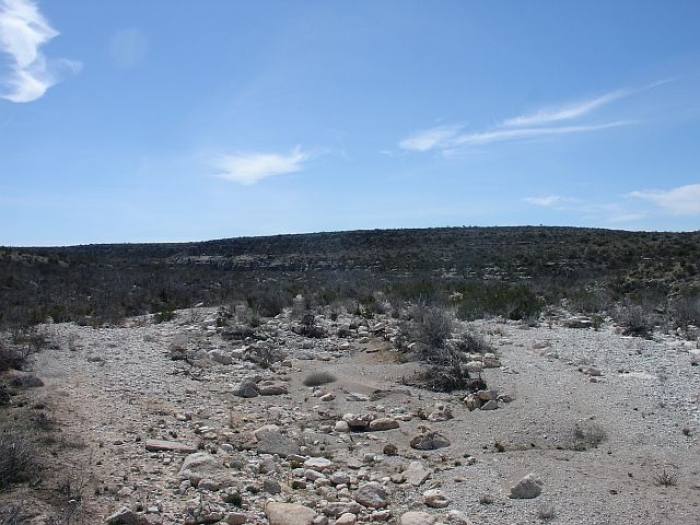 |

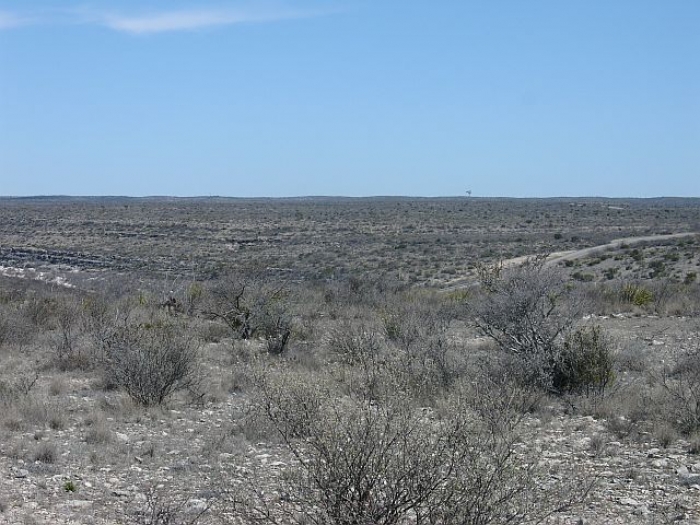
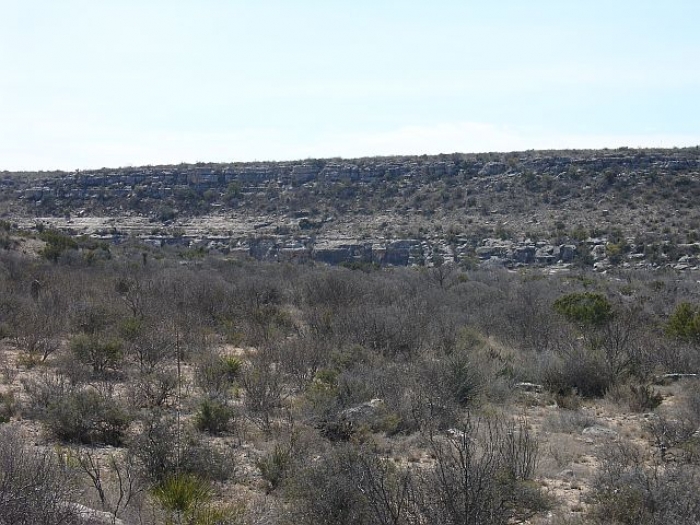
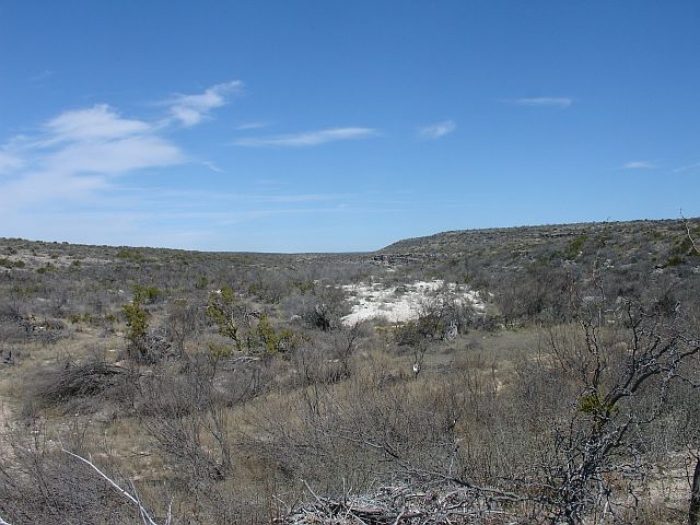

|
|
Location
and Legal
Description
|
Acres: 204.4,
Tract: 19
|
|
State |
Texas |
County |
Terrell |

|
 
 |
|
INVEST or RESELL! |
|
Size |
204.4 Acres
|
Taxes |
Taxes Total Less
Than $1352 Per Year
and a yearly maintanance
fee of only $1/acre. |
|
Utility Infrastructure |
Rural
|
Time Limit to Build |
None |
|
Information
|
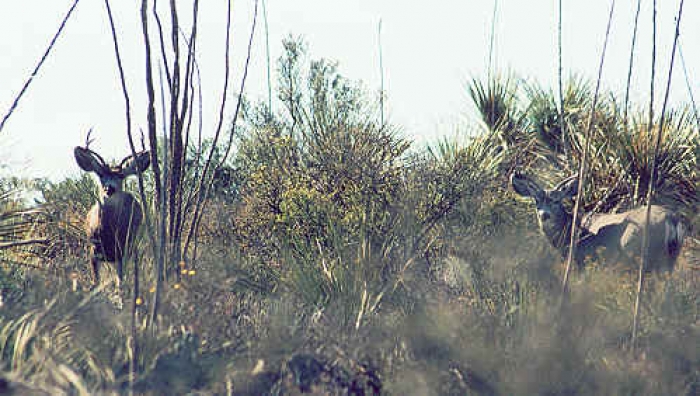 Terrell
County, Texas Terrell
County, Texas
Welcome to Terrell County and Sanderson - the "Cactus Capital of
Texas." Residents and officials alike strive to keep our existing
quality of life and provide amenities and services that make Sanderson
a wonderfully friendly place to visit.
Sanderson is the County Seat with a population currently of about 900.
There are only 1,000 in the entire county. Dryden, 20 miles east, is
the only other town in the county. About ten souls - plus a few goats
and sheep - currently live there. Sanderson is approximately 3,000
feet above sea level. It is only 25-miles north of the U.S./Mexico
border - although the nearest "legal" crossing is at Del Rio, 120
miles east. The town of Sanderson lies between beautiful canyons and
enjoys a wonderful climate year-round. We have an exemplary public
school, low crime and a low cost of living. And it's very quiet.
The native Apaches were one of the first peoples to inhabit Terrell
County. By the time the railroad came through this area in the late
19th century, they had mostly been driven away by the U.S. Army forces
stationed at Fort Lancaster to the northeast and Fort Davis to the
west.
There are still many sites in the county that show evidence of these
wonderful Native American tribes and their daily life. Pictographs,
arrowheads and grind-holes can still be seen. Meyers Spring is one of
the best-known pictograph sites in the area. It is currently a
National Heritage Site.
Railroad surveyors reached what we now know as Sanderson in 1881. It
was originally called Strobridge after the president of the then
railroad construction company. In this harsh and desolate canyon
country, there were only early sheep and cattle ranchers. But with the
combination of the railroad and the early the sheep and cattle
industries, Sanderson thrived for a time.
Terrell County was created by the Texas Legislature in 1905. About
1,500,000 acres of land was sectioned off from Pecos County.
The population decline began after the Interstate Highway 10 was
built. Prior to that, U.S. Highway 90 was the main route to points
east and west. In 1965, a devastating flood took 27 lives. Homes and
buildings were destroyed or damaged and even highway bridges and the
railroad suffered major damage. The town slowly recovered after the
tragic loss but the population did not. The Southern Pacific railroad
moved the crew-base from the Sanderson terminal in 1995 and this took
many families out of Sanderson.
The number of large ranches have also since declined. The primary land
use still is ranching but many ranchers have found new revenue sources
from recreation and hunting. The County and School district are the
largest
employers. The Border Patrol is expanding its operations and this
means that more people and families are moving in. Tourism is on the
increase, which adds enormously to the economy.
If you are thinking about moving from the big city and enjoying a
change of pace - almost a return to the lifestyle of the 1950's -
consider moving to Sanderson. We always welcome guests and travelers
alike.
Big Bend National Park and State Ranch
The Big Bend of the Rio Grande is named for the vast curve of the
fabled river in remote southwest Texas. It is a wildly beautiful
natural region, with a complex and fascinating history. Over a
millions acres of public land including Big Bend National Park and Big
Bend Ranch State Park offer hiking, camping, river running, horse
riding, mountain bicycling, jeep touring, along with abundant
sightseeing opportunities along paved and improved roads.
Accommodations run the range from convenient and comfortable to full
service luxury.
A few remarkable communities near Big Bend National Park: Marathon,
Terlingua and Study Butte, Terlingua Ghost Town, and Lajitas, offer
services, amenities, and entertainment. A variety of guided outdoor
activities are available. Big Bend is a diverse region with endless
possibilities for adventure, whether you like it soft, hard or in
between.
Every season in Big Bend has its own unique character. Summer rainy
season brings cooler temperatures, spectacular skies and water in the
Rio Grande. Fall brings ideal weather for all activities. Spring comes
early to Big Bend, March and April are the most popular months to
visit. Winters are mild; February is becoming on of the more popular
months to visit.
There is something to do here for everyone. You can hunt, fish, play
golf, white water raft, hike, etc. |
|
|
|
|
 |
 |
 |
 |

|